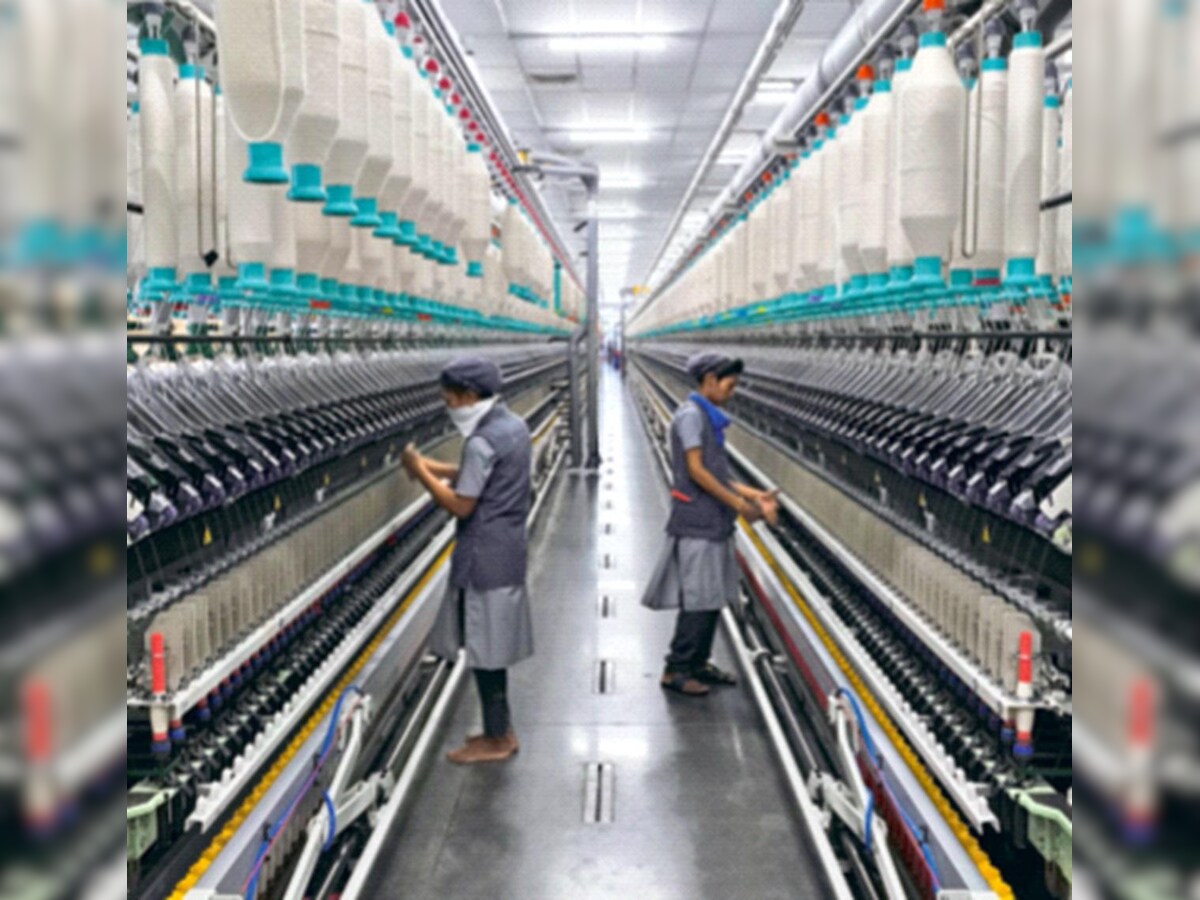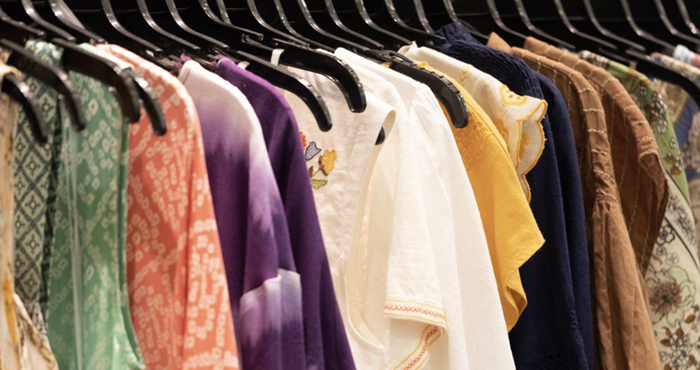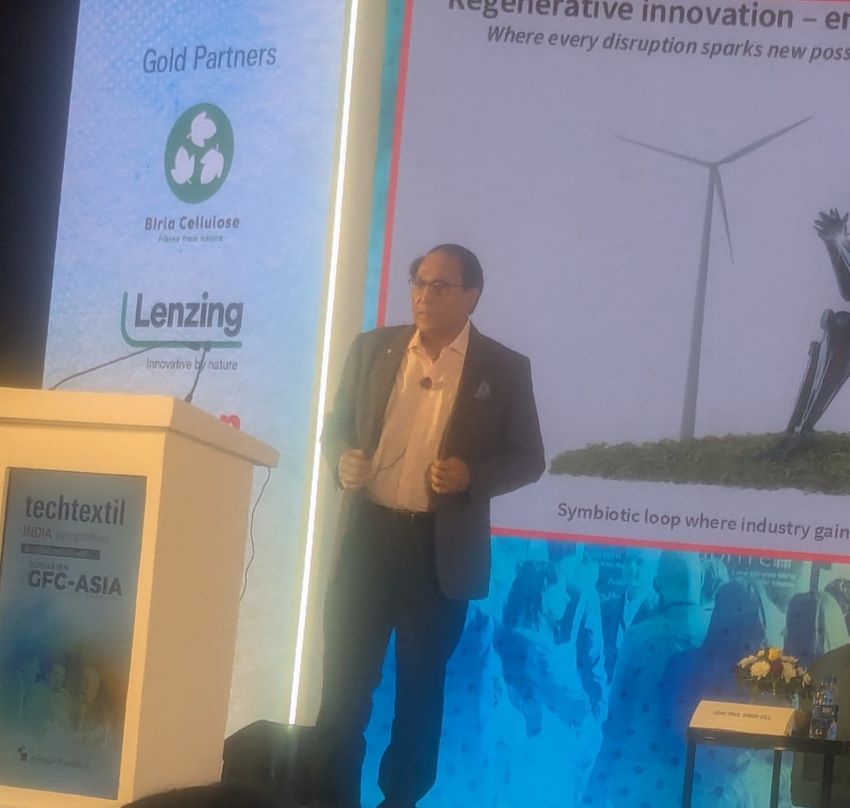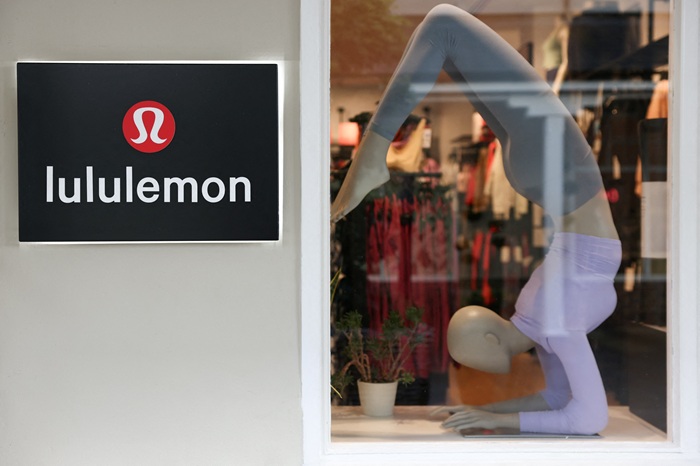FW
Protecting the interests of domestic manufacturers, India has imposed anti-dumping duty on imports of Purified Terephthalic acid (PTA) from five countries.
The countries slapped with anti-dumping duty are China, Iran, Indonesia, Malaysia and Taiwan. Imports of PTA from these nations now attract an import restrictive tax in the range of 85.87 dollars to 168.76 dollars per metric ton.
PTA is a vital raw material for polyester yarn production. Reliance Industries is the sole manufacturer of PTA in the country.
Anti-dumping steps are taken to ensure fair trade and provide a level-playing field to the domestic industry.
In Asia, the growth in PTA consumption has been driven by strong polyester fiber demand, which is the largest segment accounting for nearly two-thirds of global polyester demand. Polyester fibers are used to make fabrics for apparel and home furnishings such as bed sheets, bedspreads, curtains and draperies. They are also spun together with natural fibers such as cotton to produce a cloth with improved properties such as wrinkle resistance.
Other PTA applications include coatings and composite materials, based on unsaturated polyester resins, and hot-melt adhesives.
India currently imports two to three lakh tons of purified terephthalic acid every year while domestic production is six lakh tons.
Total production for the 2015-/2016 cotton season in Zimbabwe is estimated at between 70, 000 and 80,000 tons.
Merchants have already started buying cotton at the common collection points with prices averaging 36 cents per kilogram, a price which may change if farmers are allowed to have their way at the bargaining table. The 2016 cotton marketing season is currently in progress.
The price continues to be negotiated between farmers and ginners and farmers are being paid according to the grade of their cotton seed, hence the price adjustments will be paid after grading.
Cotton production has declined over the past years due to viability challenges. Contractors complained of side marketing while farmers said buyers were offering low prices.
The government had to intervene last year by assisting cotton growers with inputs under the Presidential Inputs Scheme.
Farmers are complaining over the cotton producer prices, which they say are not viable. Farmers say some of the contractors do not give adequate inputs. In other words farmers have lost trust in ginners’ paying adjustments.
But farmers hope buyers will be fair and pay firm prices that will enable the farmers to go back to the land. Buyers say they will give an adjustment at the end after the crop has been graded.
The Directorate General of Customs Valuation (DGCV) of Pakistan has drastically increased customs duty with an average of over 400 per cent on unbranded garments. This has forced commercial importers to find other illegal means to bring imported attires into the country.
According to market sources, an unprecedented increase in customs duty with an average of over 400 per cent on unbranded garments as compared to previous valuation ruling is compelling importers to divert around 175 containers which was grounded at Karachi port to UAE for bringing all these containers under the guise of Afghan Transit Trade (ATT) cargoes into the country.
However, sources have ruled out the possibility of any negative impact on import of garments after duty increase, saying that all garments consignments would now enter into the country under ATT cargoes. Moreover, they said that this initiative would create negative impact on customs revenue collection besides encouraging smuggling and corruption. In short, the customs department may be deprived of collecting revenue of over Rs 1.5 billion from garments importers.
Meanwhile, a customs official who was closely involved in evolving this new valuation ruling, on condition of anonymity, said that department did not increase customs duty on unbranded garments but did rationalise its value as per international prices.
Moreover, he said that this was the first time when the department had taken Pakistan Readymade Garment Exporters and Manufacturers Association (PRGEMA) on board for rationalising the valuation of unbranded garments as per international prices adding that this new valuation ruling would also protect local garment industry.
The Coats Group had lower sales growth in the second quarter due to tough market conditions. Operating profit was up 24 percent on an adjusted basis. Industrial profit growth was 27 per cent delivered by market share gains and cost productivity. Adjusted EPS was up 24 per cent with higher operating profit and reduction in tax rate offset mainly by unrealised losses on foreign exchange hedges.
Adjusted free cash flow for the last twelve months was 82 million dollars primarily due to higher profitability. The revenue of 718 million dollars was maintained. Americas Crafts margin increased, despite tough market conditions, due to focus on costs.
Coats, based in the UK, is the world's leading industrial thread manufacturer and a major player in the Americas textile crafts market. At home in more than 60 countries, Coats employs 19,000 people across six continents.
Coats' pioneering history and innovative culture ensure the company leads the way around the world: providing complementary and value added products and services to the apparel and footwear industries; applying innovative techniques to develop high technology specialty threads and yarns in areas such as automotive and fiber optics and extending the crafts offer into new markets and online.
China’s mills want more cotton to be released from state reserves as fewer quotas for low-tariff imports and higher demand for local yarn tighten supplies.
Greater dependence on reserves at the world’s top importer could dent a rally in global cotton futures that hit a two-year high this month. But in the long term, it could be bullish for prices as China runs down its massive stockpiles.
Already 1.57 million tons have been sold via auctions, nearly 100 per cent of the volumes offered since sales started in May, but traders say more is needed to meet an annual demand of seven million tons given output and imports are on the wane.
China's January-June cotton imports more than halved from a year ago.
Strong demand for reserve cotton, estimated at more than half of global stocks, follows last year's dismal sales when the government shifted just 3.4 per cent of its stocks due to high pricing and a slowing economy.
Bids from China's mills, which cleared out stocks on hopes the government would sell at lower prices to attract buyers, as well as from traders have led to stronger sales this year.
China had said it would increase the daily volumes on offer to 50,000 tons if more than 70 per cent of the auctioned volume was sold three days in a row. However, the maximum cotton offered has remained at 30,000 tons.
As per a report of the European Apparel and Textile Confederation (EURATEX), China’s share in the imports of goods from the European Union has been decreasing over the years.
While in 2010, its market share of EU textiles and clothing imports stood at 40.8 per cent, it plunged to 35 per cent in 2015.
Besides, Mediterranean countries, which have long enjoyed the advantage of their proximity to the EU-28, have experienced the same scenario as that of China. Its share has contracted from more than 20 per cent in 2009 to 18 per cent in 2015. This has benefited SAARC zone… From 19 per cent in 2010, its market share of textiles and clothing imports in 2015 was 24.6 per cent.
The report also mentions that the ASEAN zone, which is smaller than the SAARC area, showed enough drive and economic dynamism to escalate its share of textile and clothing imports from over 6 per cent in 2010 to 8.6 per cent in 2015. Totally, these four zones accounted for 86 per cent of total extra-EU textile and clothing imports in 2015. Clothing products represented 80 per cent of total imports, a +10.5 per cent gain in value terms.
Products-wise, China came up tops as the top supplier of woven garments’ imports. However, its share continued to decline at 37.6 per cent. The Mediterranean countries also witnessed decline in this segment ending up with a 16.5 per cent share.
As unions, employers and government officials in Cambodia met for the first time in the run-up to the annual battle over the garment industry’s minimum wage yesterday, another group of labour and advocacy groups came asking when they would be part of those discussions.
Meeting at the Phnom Penh’s Sunway Hotel, union organisers from sectors as varied as construction, food services, tourism and manufacturing discussed a variety of approaches – from a flat minimum wage that would span all industries to a more measured sector-by-sector approach – to push on the national level.
While there have been no formal discussions on creating a national minimum wage in Cambodia, a Labour Ministry spokesman had said way back in February that the yet-to-be-drafted minimum wage law will look into expansion of the wage to other sectors.
Country director for worker advocacy group, Solidarity Center, William Conklin said that the meeting was driven by an increasing sense of urgency among non-garment sector unions, eager to stake out their positions on the minimum wage going forward.
Here it may be noted that Vietnam currently has four minimum wages based on geographic areas with increases mapped out over a five-year period while both Thailand and Malaysia have their own national minimum wages.
Article 104 in Cambodia’s Labour Law stipulates that wages in the country “must be at least equal to the guaranteed minimum wage; that is, it must ensure every worker of a decent standard of living compatible with human dignity.”
Foreigners working in apparel and other factories in Bangladesh in different industrial zones in and outside the capital are now under extensive security vigilance following the recent terrorist attacks.
Foreign experts from 20 countries, mainly from India, Sri Lanka, Pakistan and China, are currently working in the garment, textile and leather factories. Most of them are serving as consultants, quality controllers and supervisors, designers, human resource officers and marketing officers.
There are around 4,350 foreigners. Of these foreigners, some 7,920 are from India, 2,612 from Pakistan, 2,873 from Sri Lanka, and more than 2,800 from China.
Full-time security is being provided to global buyers and retailers during their stay in Bangladesh.
In the Gulshan café attack nine Italians who were involved in the garment business were killed. Foreign buyers have started postponing their scheduled visits to Dhaka for business negotiations, citing security reasons. In many cases, buyers have asked their local agents to be present in a third country for meetings along with representatives from other exporting countries.
Some 26,600 foreigners have taken work permits to work in Bangladesh during the last five years and most of them are employed in the readymade sector.
As for foreign nationals who have entered illegally, they will be brought under the legal procedure and allowed either to stay in Bangladesh or will be pushed back to their respective countries.
"The Bangladesh government is taking a major step to show that the right lessons have been learned, after the numerous RMG factory accidents. Besides the Accord/Alliance restructuring and safe-guarding programs, another RMG rescue plan is being implemented which also seeks defensive and insurance-driven priorities; unlike the Accord/Alliance and other similar pursuits, this one creates a fund with two accounts (beneficiary and contingency) for future exigencies."
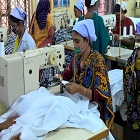
The Bangladesh government is taking a major step to show that the right lessons have been learned, after the numerous RMG factory accidents. Besides the Accord/Alliance restructuring and safe-guarding programs, another RMG rescue plan is being implemented which also seeks defensive and insurance-driven priorities; unlike the Accord/Alliance and other similar pursuits, this one creates a fund with two accounts (beneficiary and contingency) for future exigencies. While the former facilitates grants that workers and their family members may dip into, the latter would look after group and health insurance premiums as well as remuneration during work stoppages.

The fund would be fed by a .03 per cent payment of all RMG export freight- on-board (FOB) price and any voluntary contributions from the government and buyers. It stems from the amended 2013 labour law that was effective as of September 2014. Behind that amendment was the argument that export-oriented sectors should have a welfare fund.
A move in the right direction
The Bangladesh government is taking a major step to show that the right lessons have been learned, and must be applauded. It must also see this as a ‘first’ step: subsequent steps should be to make government contributions permanent, for example, match every RMG taka with one from the national coffer; and ramp up periodic (even unannounced) inspection visits just to see if the new installations remain functional. Both these "subsequent steps" would be an investment into the country's future health: it would show the respect even workers need, breed incentives within their families, and thereby across the country, and offset external complaints that we are more callous than caring. Taxing luxury consumption to pay for the extra dip into the national coffer could be a good step, since the key beneficiaries of RMG assembly line workers are none other than businessmen who, by and large, disproportionately purchase luxury goods. Once the businessman is taken out of the equation, the country itself becomes the key beneficiary.
The government could start raising the ante for central funds with incentives to other private contributors, in the same way: tax exemptions can be given for each contributor to the extent of each contribution, not only for the actual contribution but also that same value of other income of the contributor. Wealthy Bangladeshis would be motivated, as too foreign buyers and investors.
A win-win situation
Bangladesh’s RMG central fund can be seen as an equivalent of the ‘poor laws,’ but like those other countries, should deepen into other forms, legislations, and measures.
A win-win outcome awaits both the RMG sector and the country if all the players make the correct move selflessly, not just the government with the fund, but, and more particularly, the RMG owners with much-needed reforms, as outlined in the post-Tazreen, post-Rana Plaza Accord/Alliance formula. As of May 2016, out of the 1,452 Accord/Alliance inspected factories, seven had completed the reforms fully, 57 were close to a full-reform completion, and 1,388 were still behind. Out of its $50 million five-year budget, the Accord/Alliance has spent $30 million, yet the future is open to immense opportunities even with such large expenditures. As Bjorn Lomborg of the Copenhagen Consensus Center noted, full reform compliance would cost Tk 234 billion, yet since the 2021 target of exporting TK 3.9 trillion ($50 billion) worth of RMG products is possible, earnings would be 14 times higher than costs, and the creation of any RMG special zone, as is being planned, would add 300,000 new jobs in 142 new factories for only Tk 1.3 billion, but eventually fetch Tk 312 billion of new income.
Several Chinese exhibitors will be showcasing yarns, fabrics and garment accessories at a special Chinese Pavilion at the second edition of Yarn, Fabric & Accessories trade show (YFA) from November 23 to 26 at the NSIC Exhibition Complex in New Delhi. YFA 2016, aims to redefine the way fibres, yarns, fabrics and apparel accessories are sourced and bring renowned suppliers from these four segments closer to buyers and also offer buyers a one-stop place to source all their requirements.
YFA 2016 will feature fibres to yarns and fabrics and accessories. The exhibition space will double from one to two halls. Additionally, WGSN, the global authority on fashion trends will be the trend partner, and will be putting up its pavilion. The 2015 edition, saw 100 exhibitors and more than 7,477 visitors. For this year’s show, the organizers expect over 250 brands from several countries and more than 15,000 visitors from 15 countries.
Their optimism stems from the fact that with four months to go, 75 per cent of the space has already been booked. It is also heartening to note that several exhibitors who exhibited at the 2015 show like Indorama Synthetics, TT, Asahi Kasei Fibers from Japan, are returning for the 2016 show. New exhibitors who have confirmed their participation include Bhilosa Industries, National Textile Corporation (NTC), Vardhman Textiles, RSWM, King Lace etc.

